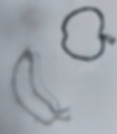top of page

This project is an A-4 size, textured and tactile simple illustrations colouring book and crayons for kids with visual imparity, specially meant to bring panoramic experience through their fingertips.
Publication & Print
Project 2023
Panorama


inspiration
Colours for those who have never seen it. This was my initial idea. While trying to align it with the UN goals, I thought of the idea of making a tactile colouring book with corresponding textured crayons for the visually impaired kids. Therefore, I started reading about the possibilities in this sector.

enroute Panorama
After all the insights from the research and interviews, I started with the design ideation for the Panorama- A tactile colouring journey, as well as the crayons.
The planning for the project here forth would be just test and trials of the various materials and mediums that could meet the need of the textured boundaries in the colouring book.

initial challenges faced
Being a visual designer, when conducting the interviews I could easily picture what I was saying about the potential design idea but the people I was interviewing or even discussing my ideas with, they didn't understant the idea as such.
The other very big challenge was talking to the special kids at the school because of the language barrier.

WHY A COLORING BOOK?
After conducting a couple of interviews with the teachers at special schools, I found out that it makes the kids immensely happy to feel that they have achieved something independently and they love to get compliments on that.
When we look back, it is always something we drew as a kid that excited us, hence a way for such expression is a tactile colouring book.
Unlocking Perspectives



"We had to learn everything the hard way in our time. Kids here, they dont know how to read braille properly but they have stronger cognitive abilities.
Textures and shapes are very well known to the students because of the tactile graphics book included in the study curriculum."
– Desai Sir, Dean, Blind School, Gandhinagar.
CRAFTING CONCEPTS






SKETCH
TO STRUCTURE



Materials used:
1. Initial trial was with the metal wires.
Why it didn't work:
I tried the model with a single wire compression on the paper and one with keeping the wire attached to the paper. Neither of them worked because the boundary wasn't distinctive and the metal increased the weight of the paper.
2. Second trial was with clay.
Why it didn't work:
Clay breaks if pressure is applied, hence isn't the best choice.
3. Third attempt was with the m-seal.
Why it didn't work:
M-seal solves the issue of weight or breakage but it looks too shabby for a colouring book.

Low fidelity prototypes
High fidelity prototypes


Materials used: For the tactile projections of the drawings I have used a thread which is a good fit because of its qualities like light-weight, free flowing, easy texture boundaries and is cost-efficient. For the colours, in the prototype stage I have used heat to make the indents and a 3D outline marker for making the protrusions on the crayon surface.

The symphony


bottom of page
